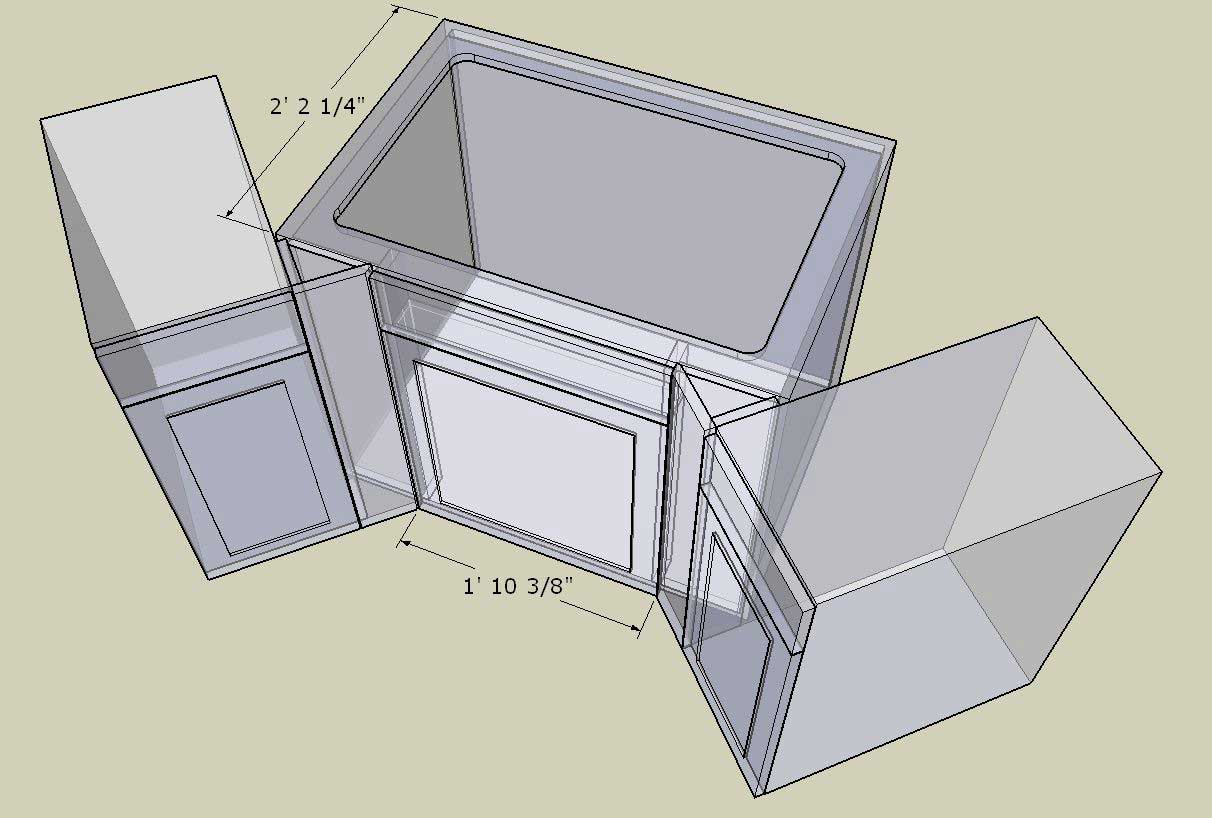Question (WOODWEB Member) :
I have a Striebig Compact panel saw and I don't have scoring. When I cut my melamine it chips a lot. It’s been serviced and square. Does anybody know a good way for the melamine no to chip? I mostly use pine core melamine.
Forum Responses
(Cabinetmaking Forum)
From Contributor G:
Try using a hollow ground saw blade.
I still think the main problem was that the geometry for a 12" blade is different than a 10" blade. It is easier to make a 12" blade cut good than a smaller one. This was all without scoring of course. I settled on a positive hook hollow face but only cut so many sheets before buying new ones. I use the same saw as you have now but added the scoring as soon as we received it, this is what I would recommend to solve your problem long term, you can buy the kit and it is easy to install.
Now you have two blades to deal with - always a trade-off but I would never go back to no scoring, although it is easy to disengage when not needed to save the blade. We are trying a diamond scoring blade now, $700 ouch, it seems to be working real well only time will tell, that is one of the trade-offs, I really hated paying sharpening on and adjusting the scoring blade. Now we just use a positive hook triple chip blade, no problem getting them sharpened. Hopefully others will chime in with a blade that has worked well on this type of saw but for us long-term scoring was the answer.
If this is the main problem, then this might help. You may already be aware that with the Streibig you can make a scoring cut without a dedicated scoring blade. If so, perhaps others may gain from this information. The technique works best in crosscut mode, however, it will work in rip mode also. I will describe crosscut. With the material in position for a crosscut and the motor carriage starting at about 6" from the bottom, you lower the blade into the material till you just hear the blade kissing the material.
As the blade is kissing the material, raise the carriage upward and the blade will be making a climb cut, which is exactly why a scoring blade works so well! You will hear the blade just skimming the top veneer as it is scoring the material. Once you reach the top of the stroke you plunge the saw blade to its full depth and pull the carriage downward through the scoring cut you just made.
I hope I have described this operation clear enough to understand easily. Once the stroke is mastered it is very little effort to score melamine panels and delicate veneers cross grain with zero or very little tearout with no separate scoring blade. I am guessing that this technique can be used on other vertical saws as well.
Scoring on the upstroke: On the Striebig you can adjust the riving knife to set the depth of score. Make sure you are using the strut too to avoid bending the knife. Check to make sure the riving knife is flat, not bent. A score depth between 1/16” and 1/8” will result is less stress on the very tips and yet not too much since the blade is turning opposite of its designed operation when scoring.
Use the hollow ground blade recommended by the distributor Colonial Saw. It is a Leuco blade (I do not have access to one for the part number as I write this) and is far less expensive than many of the blades offered by tooling folks. Keep the tracks and guides and bearing scrapers for the carriage and motor clean. If any roughness exists during travel that will translate into chipping as the blade travel is upset. Pay particular attention to the bearing and travel way at the bottom of the carriage, since this is exposed to the most saw dust.
Two factors affect the cleanliness. One, make sure all the bearing scrapers are in place and clean of buildup. Second, do not use any lubricant that will attract sawdust. I apply a coating of TopCote about every second or third blade change to the various travel ways.
Favor crosscutting wherever possible. This puts the blade in a more natural aspect. You are more likely to have chipping when ripping longer lengths, due to the board tension, and the pull of gravity perpendicular to the cut. Use the proper handle. Use the knobs to set the depth of cut then use the handle on the motor to advance the cut. Smoothly accelerate the travel and avoid jerking. Do not feed the motor too fast. Find the travel speed that is comfortable and consistent. As the sharpening wears, slowing the motor advance some will gain you some more cuts.
The material support rollers may not be perfectly in alignment. When crosscutting on the rollers, apply some pressure to the board on the left side of the blade to dampen vibrations and prevent the material from dropping as the cut is completed. When ripping longer pieces wider than four inches, insert shims in the cut to support the cut piece. I use plastic instead of wood shims. I cut a bondo spreader into 1” strips and use those. The softer plastic is easier on the thin melamine laminate.
When making the through-cut make sure the blade is fully entered. You may have dust preventing the full engagement, or the motor vertical movement lock may not be fully engaged. The full engagement is more critical after the blade is sharpened a few times. Using all of the above, I have gone from getting 4-5 sheets from a sharpening to somewhere between 20-30 sheets per sharpening on two sided melamine. And I am up to 12 sharpenings on some of my blades. Good luck resolving your issue!
